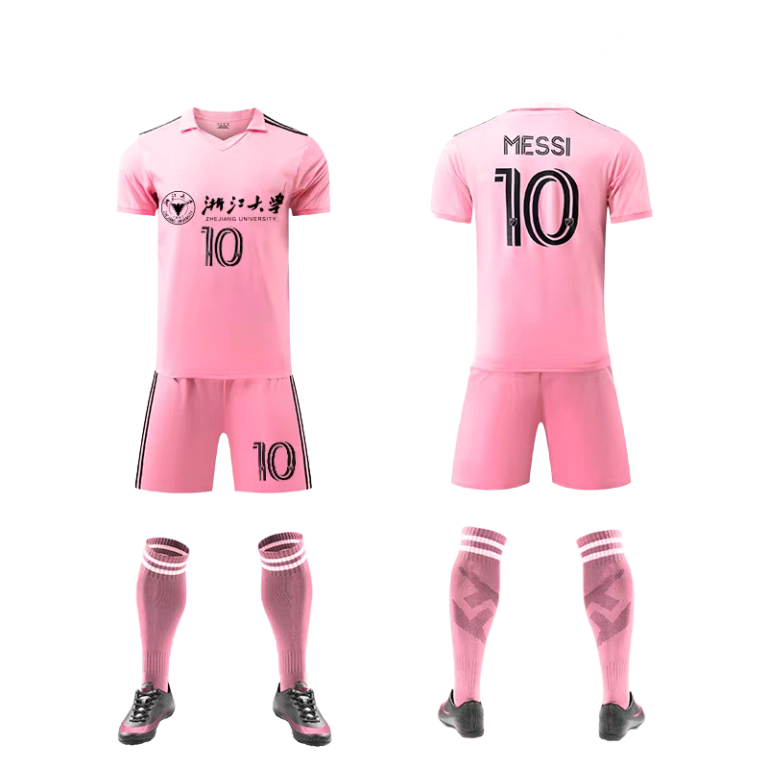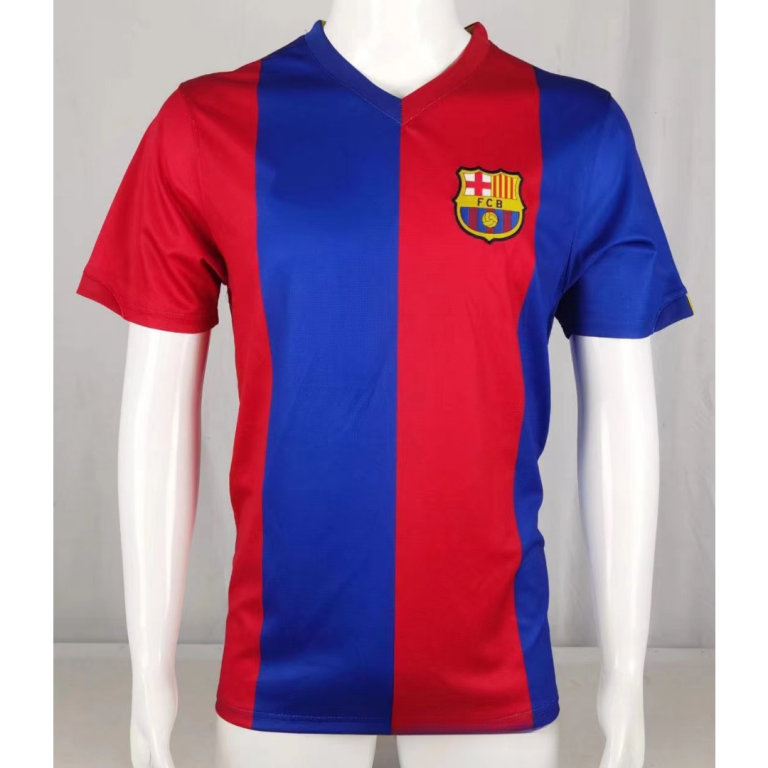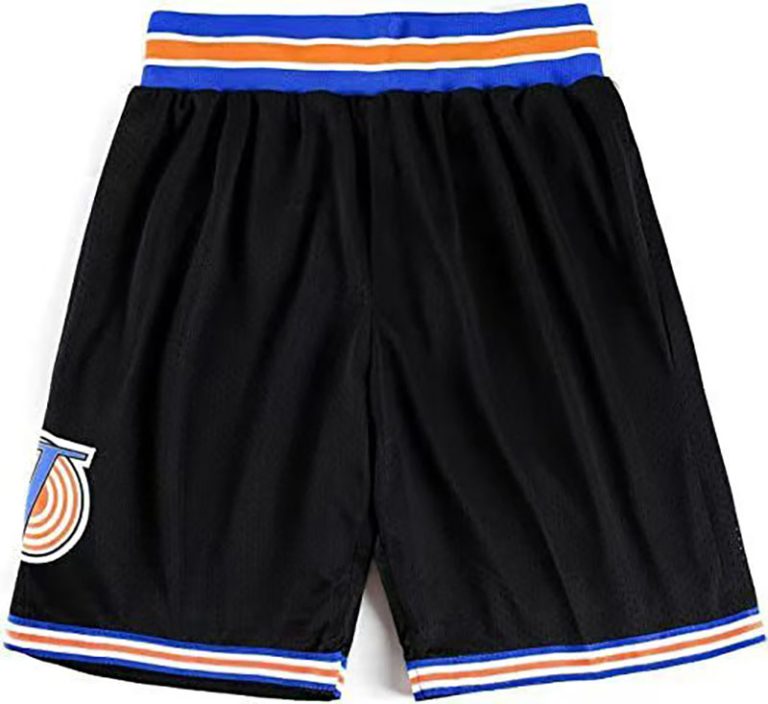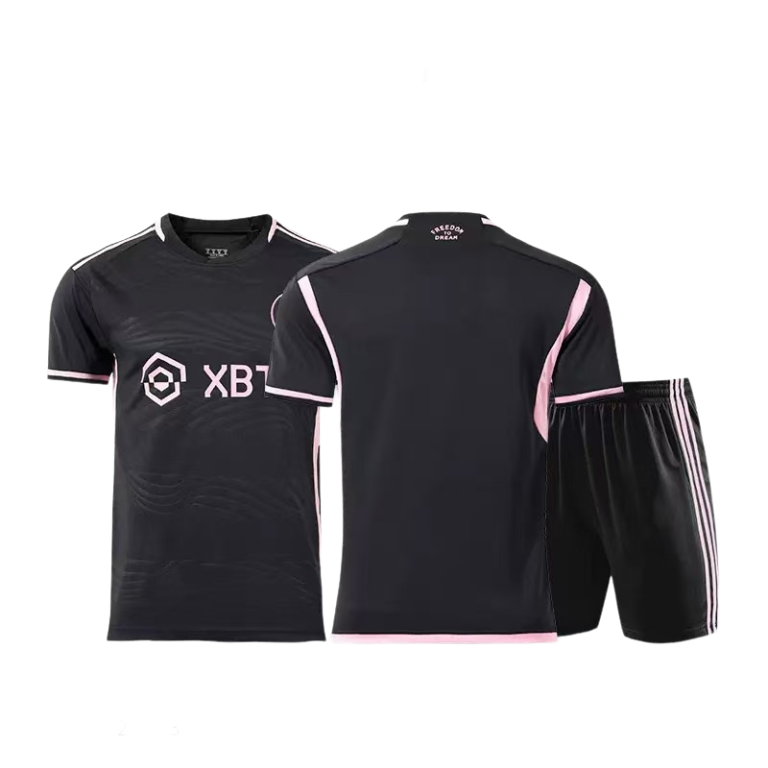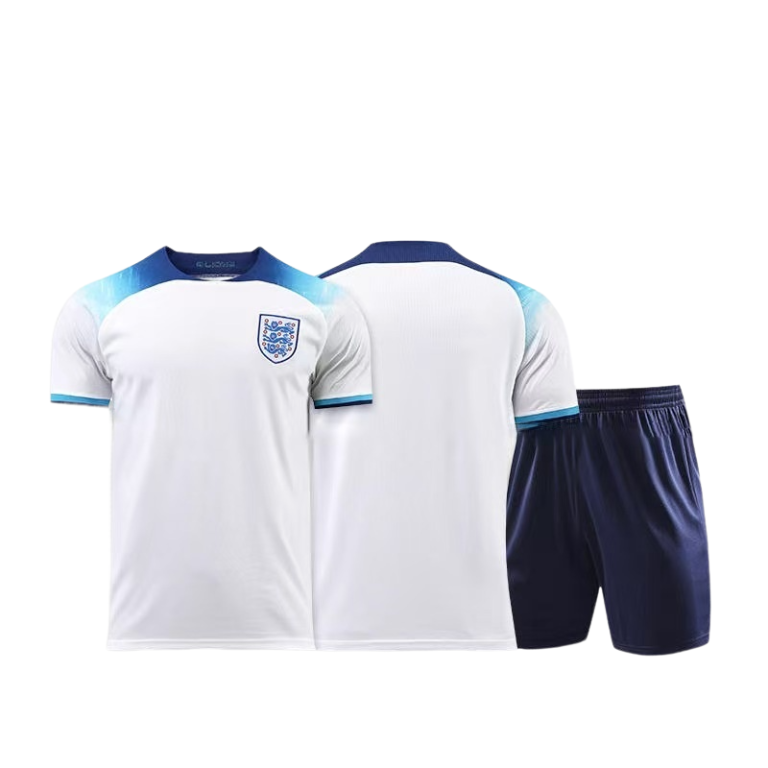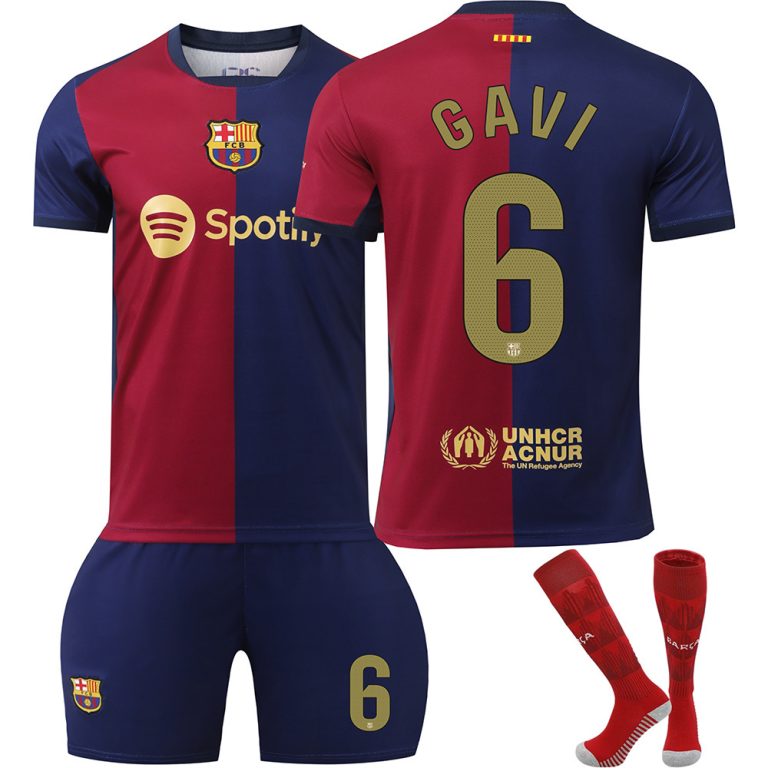How to Design a Custom Jersey: The Ultimate Guide for Basketball, Soccer, and Beyond
Navigating the world of custom jersey design can be both exciting and overwhelming. From selecting the perfect fabric to deciding on the cut and fit, each step plays a crucial role in creating a garment that not only looks fantastic but also performs well. In this article, we delve into the nuances of tailoring your custom jersey to ensure it not only reflects your personal style but also stands up to the demands of the game. Whether you’re a team captain looking to represent your squad with pride or a fashion-forward athlete seeking a unique statement piece, understanding the intricacies of jersey design is key to achieving a perfect fit and finish.
Understanding the Basics of Jersey Design
When it comes to designing a custom jersey, it’s important to grasp the foundational elements that make up a successful and visually appealing piece of apparel. A jersey isn’t just a uniform; it’s a symbol of identity, pride, and community. Whether you’re creating a jersey for a sports team, a club, or even a personal project, here are some key basics to consider in the design process.
Fabric and Material
The fabric choice is paramount in jersey design, as it directly impacts comfort, durability, and performance. Opt for materials that are breathable, moisture-wicking, and stretchy, such as polyester or spandex blends. These fabrics provide the necessary flexibility for athletes to move freely and help keep the wearer cool during intense physical activity. Consider the climate and the sport for which the jersey is designed; in colder conditions, you might want to incorporate thermal properties or a heavier fabric.
Color and Pattern
Colors evoke emotions and can significantly influence the look and feel of your jersey. Start by selecting a color palette that resonates with your team’s ethos or the brand’s identity. Consider the psychology behind different colors—red for passion, blue for trust, green for nature, and so on. Once you’ve chosen your base colors, think about patterns or textures that can add depth without overwhelming the design. Subtle stripes, geometric shapes, or a subtle gradient can elevate the visual appeal without detracting from the logo and text.
Logos and Imagery
The jersey is a canvas for logos, sponsorships, and other visual elements. The placement of these logos is crucial for ensuring that the jersey is both functional and aesthetically pleasing. The team’s logo should be central and prominent, often on the front or back of the jersey. Sponsor logos are typically placed on the sleeves, sides, or collar area. Balance is key; too many logos can clutter the jersey, while too few might make it feel sparse.
Type and Font
The typography you choose for the player numbers and names should complement the rest of the design. For a sporty, modern look, opt for bold, clean fonts. If you’re aiming for a vintage or classic feel, a more stylized or handwritten font might be appropriate. Ensure that the text is easily readable from a distance, as jerseys are often worn on the field or court where visibility can be limited.
Cut and Fit
The cut of the jersey should be comfortable and functional. Consider the range of motion required for the sport in question. A tight fit is often preferred in sports like cycling or soccer, while a looser fit might be more suitable for sports like American football or baseball. The hem, collar, and sleeve lengths should also be appropriate for the sport and the climate, ensuring that the jersey stays in place during play.
Special Features
For a more unique or performance-driven jersey, consider adding special features. These could include reflective strips for safety, moisture-wicking panels for temperature regulation, or breathable mesh panels for added ventilation. These features can enhance the jersey’s utility and make it stand out.
Personal Touches
Finally, don’t forget to add personal touches that make the jersey unique to your team or brand. This could be a unique color blocking, a special pattern that represents a significant event or achievement, or even a special edition release for a special occasion.
Testing and Feedback
Before finalizing your design, it’s wise to test it out. Have members of the team or brand wear the jersey to ensure it fits well and is comfortable. Gather feedback on the design, including any adjustments that might need to be made for fit, comfort, or visibility.
Finalizing the Design
Once you’ve gone through all these considerations and made any necessary adjustments, it’s time to finalize the design. This might involve working with a graphic designer or using a jersey design software to ensure everything is in the right place and the colors are as vibrant as intended.
By understanding these basics, you’ll be well on your way to designing a jersey that not only looks great but also serves its purpose effectively. Remember, the jersey is more than just a piece of clothing; it’s a statement, a representation, and a connection to the people and the spirit that it represents.
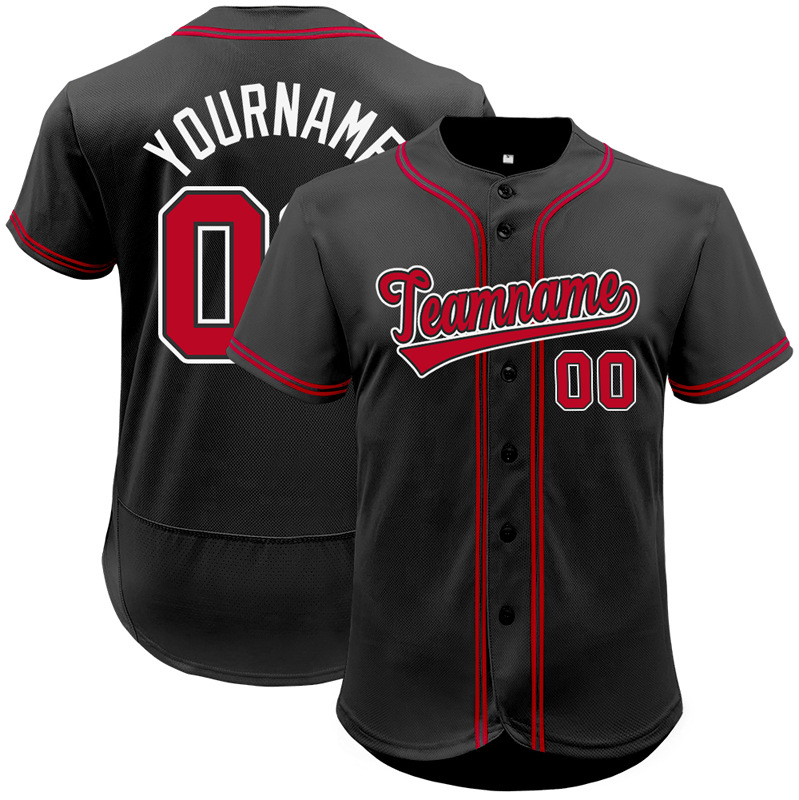
Choosing the Right Fabric
When it comes to designing a jersey, the choice of fabric is paramount. It not only affects the comfort and durability of the garment but also plays a significant role in the overall look and feel of the uniform. Here are some key factors to consider when selecting the right fabric for your jersey:
-
Performance Requirements: The first thing to consider is the intended use of the jersey. Is it for casual wear, training, or competitive play? For high-performance activities, fabrics that wick moisture away from the body and provide breathability are crucial. Look for materials like polyester blends, which are known for their moisture management properties.
-
Comfort and Fit: The jersey should feel comfortable against the skin, allowing for unrestricted movement. Consider the elasticity of the fabric, as jerseys need to stretch to accommodate the wearer’s movements. Fabrics like spandex or elastane can offer a snug fit without constricting the body.
-
Fabric Weight: The weight of the fabric can impact the overall warmth and breathability of the jersey. Lightweight fabrics are ideal for warm weather, while heavier materials can provide warmth in cooler conditions. The weight is often measured in grams per square meter (gsm), with lower numbers indicating lighter fabrics.
-
Durable and Long-Lasting: Durability is essential for a jersey that will be worn frequently. Look for fabrics that are resistant to wear and tear, such as those with a high thread count or reinforced stitching. Materials like nylon and certain types of polyester are known for their strength and longevity.
-
Colorfastness: If your jersey will be subject to frequent washing, it’s important to choose a fabric that retains its color over time. Colorfastness is the fabric’s ability to resist fading, bleeding, and discoloration, especially when exposed to sunlight or harsh detergents. Fabrics treated with dye fixatives can help maintain vibrant colors.
-
Shrinkage and Stretch: Some fabrics shrink or stretch more than others when washed or exposed to heat. It’s important to account for this when choosing a fabric, especially if you want a jersey that will maintain its shape over time. Check the fabric’s shrinkage percentage and its ability to return to its original size after stretching.
-
Cost Considerations: The cost of the fabric can vary widely based on the type of material, its quality, and the source. While high-quality fabrics may be more expensive, they often offer better performance and longevity. Set a budget that aligns with your needs and prioritize the features that are most important for your jersey.
-
Environmental Impact: More and more athletes and organizations are considering the environmental impact of their gear. Look for fabrics that are sustainable or made from recycled materials. Fabrics like recycled polyester or organic cotton can be a greener choice.
-
Testing and Feedback: Before settling on a fabric, it’s a good idea to test samples. Wear a sample jersey during your activities to ensure it meets your comfort and performance standards. Seek feedback from others who might try on the jersey as well.
-
Brand and Manufacturer Reputation: Finally, consider the reputation of the brand or manufacturer. A well-established company is more likely to use high-quality materials and provide reliable customer service. Look for reviews or ask for recommendations to ensure you’re getting a fabric that you can trust.
By carefully considering these factors, you can select the perfect fabric for your jersey, ensuring that it not only looks great but also performs well and stands the test of time.
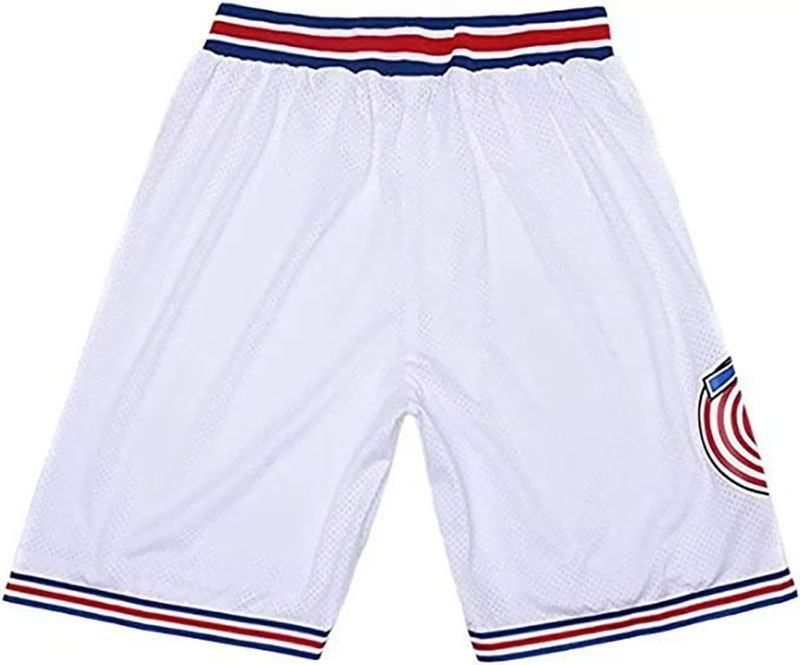
Determining the Color Scheme
When it comes to designing a jersey, the color scheme is a crucial element that can either make or break the overall look. It’s not just about picking your favorite colors; it’s about creating a cohesive and visually appealing design. Here are some key factors to consider when determining the color scheme for your jersey:
The Importance of Brand IdentityThe color scheme you choose should reflect the brand identity of the team or the event. For professional sports teams, colors are often steeped in tradition and history. They evoke emotions and create a sense of belonging. For a custom jersey, consider the ethos of the team or the occasion it’s for. Are you aiming for a vibrant, energetic look, or something more subdued and sophisticated?
Understanding Color PsychologyColors have psychological impacts on people. Red, for example, is often associated with power and passion, while blue can convey calmness and trust. Green might symbolize growth and harmony, while yellow can be seen as bright and cheerful. Think about the message you want to convey with your jersey and select colors that resonate with that sentiment.
Balance and ContrastA well-balanced color scheme doesn’t overpower the viewer. It’s about creating a harmonious blend of colors that complement each other. For instance, you might choose a primary color that stands out, like a bright orange, and pair it with a secondary color that tones it down, like a navy blue. The key is to find the right balance between the two.
Contrast is also vital. It’s what makes your jersey’s design pop. Consider high-contrast combinations, such as black and white, or more subtle contrasts like light gray and dark gray. The right balance of contrast will ensure that the jersey is not only attractive but also functional, especially for players who need to be easily seen on the field.
Considering the EnvironmentThe colors you choose should also take into account the environment in which the jersey will be worn. If the game is outdoors in a sunny climate, lighter colors might be more comfortable for the player and easier for the audience to see. Conversely, in a cooler or indoor setting, darker colors can offer a sleeker appearance.
Team Uniforms and Color CoordinationIf your jersey is part of a larger team uniform, it’s essential to coordinate the colors with the rest of the outfit. This includes the pants, socks, and even the helmet or protective gear, if applicable. Consistency in the color palette ensures that the team looks cohesive and professional.
Incorporating Logos and NumbersThe colors you select should also allow for the logos and numbers to stand out. This means not choosing a color for the main body of the jersey that is too similar to the color of the logos or numbers. The goal is for the branding elements to be clear and not blend into the background.
Seasonal Trends and FashionWhile it’s important to maintain a connection to the team’s identity or the event’s theme, you can also incorporate seasonal trends or fashion elements. For example, a new season might bring a popular color palette that can give your jersey a fresh, modern feel.
Customization for Personal PreferencesFinally, consider the personal preferences of the players or the people who will be wearing the jerseys. While the team or event may have guidelines, allowing for some personalization in the color scheme can make the jersey more meaningful and cherished.
By thoughtfully considering these factors, you can create a color scheme that not only looks great but also reflects the essence of the team, the event, and the players themselves. Remember, the right color scheme can elevate the look of a jersey, making it more than just a uniform—it can be a statement piece that represents the spirit and identity of the wearer.
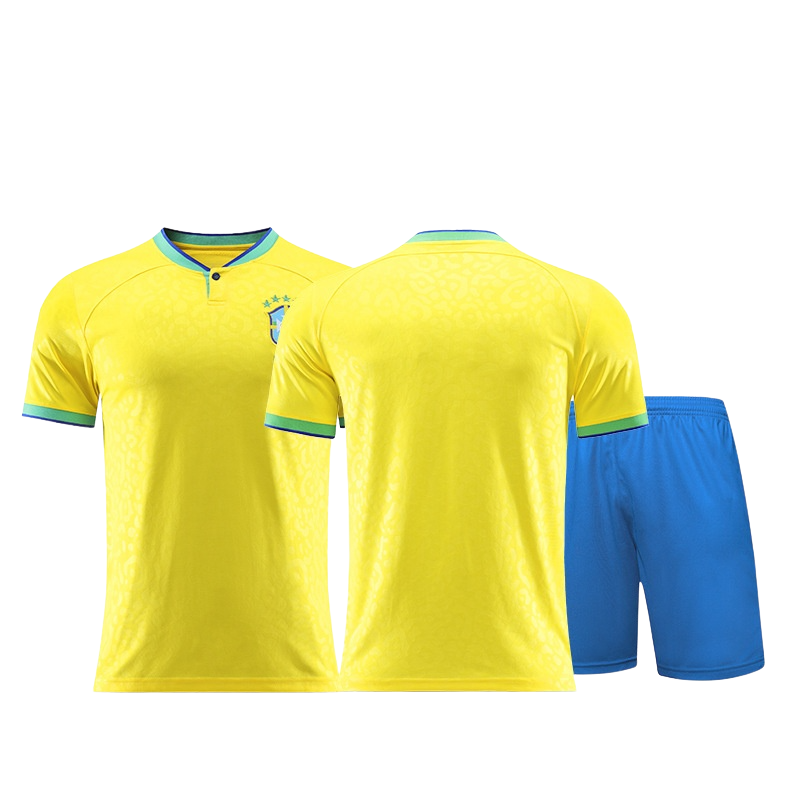
Incorporating Team Logos and Numbers
When it comes to designing a custom jersey, the inclusion of team logos and numbers is a crucial step that not only identifies the wearer but also adds a touch of personal style and pride. Here’s how to thoughtfully incorporate these elements into your design:
The Significance of LogosLogos are the face of any sports team, instantly recognizable symbols that evoke emotions and memories. When selecting a logo, consider its historical significance, the connection it has with the team’s fans, and how it fits within the overall design scheme. A well-chosen logo can elevate the jersey from a mere piece of clothing to a cherished memento.
Size and PlacementThe size of the logo plays a pivotal role in its visibility and impact. A logo that’s too small might get lost in the fabric, while one that’s too large could overwhelm the design. Typically, logos are placed on the front and back of the jersey, with the front logo being slightly larger to ensure it stands out. The placement on the sleeves or collar can also be strategic, depending on the team’s branding guidelines.
Color CoordinationThe color of the logo should complement the jersey’s color scheme. If the team’s colors are bold, a more subdued logo color can prevent the design from becoming too busy. Conversely, a vibrant logo can be a striking contrast against a neutral background. It’s important to consider how the logo’s color interacts with the fabric and any other design elements, ensuring that it remains legible and attractive.
Font and Number PlacementFor team numbers, the font choice is as important as the logo’s design. A classic, bold font might suit a traditional team, while a sleek, modern font could be more appropriate for a contemporary look. The number should be placed prominently on the back of the jersey, often centered above the player’s name, but it can also be positioned on the sleeves for a unique twist.
Integration with Design ElementsThe logos and numbers should be integrated seamlessly into the jersey’s design. This can be achieved by using similar colors, patterns, or textures to create a cohesive look. For instance, if the jersey has a striped pattern, the logo could be subtly woven into the stripes to enhance the visual appeal.
Personalization OptionsCustom jerseys often offer personalization options for both logos and numbers. Players might opt for a different color or font style for their own name and number, adding a unique touch. This can be particularly special for players who have been with the team for a long time or have achieved significant milestones.
Adhering to Branding GuidelinesProfessional sports teams have strict branding guidelines that dictate how their logos and team colors are used. When designing a custom jersey, it’s essential to adhere to these guidelines to maintain the team’s identity and integrity. This might involve restrictions on the number of colors, the size of the logo, or the placement of design elements.
Innovation and TraditionWhile logos and numbers are rooted in tradition, there’s always room for innovation. Designers can experiment with new ways to present these elements, such as incorporating 3D elements, using reflective materials for night games, or even integrating interactive features that change color or light up.
In conclusion, the process of incorporating team logos and numbers into a custom jersey is a blend of tradition and creativity. It’s about respecting the team’s heritage while also allowing for personal expression. Whether you’re designing for a professional athlete or a local sports team, the right balance of logo design, size, color, and placement can make all the difference in creating a jersey that’s as memorable as the player or team it represents.
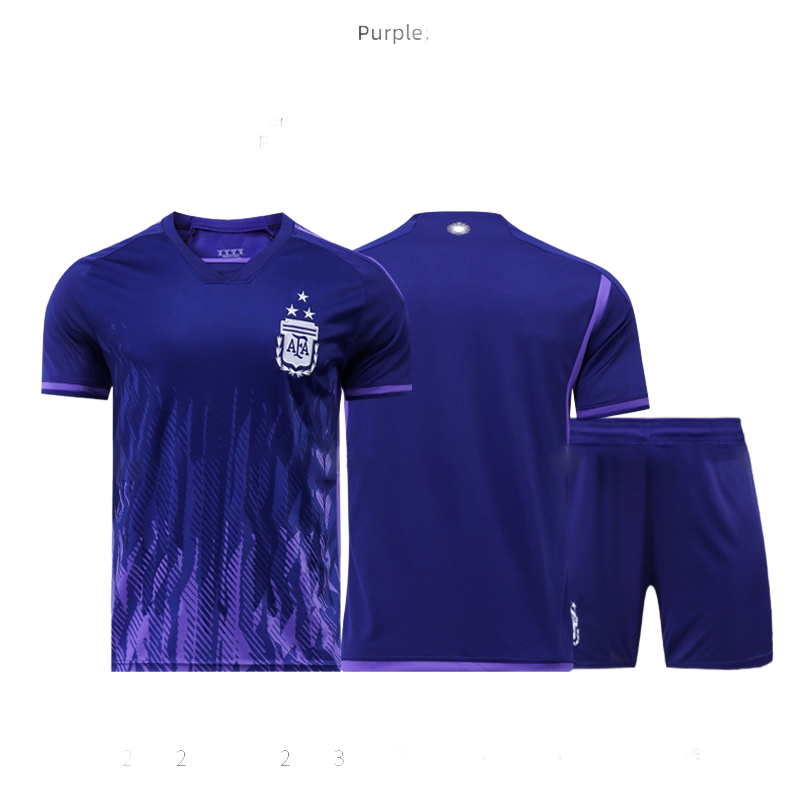
Deciding on the Cut and Fit
When it comes to designing a jersey, the cut and fit are pivotal in ensuring both comfort and functionality. The way a jersey fits can greatly impact a player’s performance and overall experience on the field. Here are some key factors to consider when deciding on the cut and fit of your custom jersey:
The Material’s Stretch
The fabric’s stretchability is a fundamental aspect of the cut and fit. Jerseys are often made from materials like polyester, spandex, or a blend that allows for a degree of elasticity. The amount of stretch affects how the jersey conforms to the body. A jersey with high stretch is ideal for activities that require a full range of motion, like soccer or basketball. It allows for ease of movement without restricting the player’s performance. Conversely, a jersey with less stretch might be preferred for sports where a snug fit is desired, such as wrestling or boxing, as it can provide a better grip.
Body Proportions
Understanding the body proportions of the players who will wear the jersey is crucial. Jerseys that are too tight can be uncomfortable and may restrict breathing, while those that are too loose can be impractical, catching on equipment or getting in the way during play. Tailoring the jersey to the average body type of the team members ensures a comfortable fit for everyone. Consider the chest, waist, and arm measurements to create a jersey that is snug but not restrictive.
Sleeve Length
The length of the sleeves is another critical detail. Sleeves that are too short can expose the player’s arms to the elements, while sleeves that are too long can bunch up and hinder movement. The standard sleeve length for most sports is about three inches below the elbow. However, for sports like baseball or golf, where players need to swing freely, shorter sleeves might be more appropriate. Customizing the sleeve length to the specific requirements of the sport and the players’ preferences is essential.
Neckline Style
The neckline is an area that can greatly influence the comfort and appearance of the jersey. There are several styles to choose from, including crew neck, v-neck, round neck, and mock neck. A crew neck is the most common and offers a clean, professional look. A v-neck can be more stylish and can also provide a bit of ventilation, but it might not be suitable for all sports. A round neck is a good choice for a classic, timeless look, while a mock neck offers a bit of warmth and can be particularly beneficial for cooler weather sports.
Tailored Seams
The way the jersey is stitched can also affect the fit. Tailored seams can ensure that the jersey fits smoothly and doesn’t have any unsightly bulges or gaps. Overlapping seams, for example, can be a source of discomfort and can catch on other clothing or equipment. Pay attention to the stitching details to ensure that the jersey is not only aesthetically pleasing but also functional.
Adjustable Features
For a more personalized fit, consider incorporating adjustable features into the jersey. This could include drawstrings at the waist or elastic bands at the wrists and hem. These features allow players to customize the fit to their preferences and can be particularly useful for athletes who require a snug fit to perform at their best.
Layering Compatibility
In sports where players may wear additional layers, such as a thermal undershirt or a protective pad, the jersey’s design must account for layering. The jersey should be breathable and allow for air circulation, but it should also not be so tight that it restricts the movement of the additional layers. A jersey that is designed to be worn under other garments should have enough room to accommodate these layers comfortably.
In conclusion, the cut and fit of a custom jersey are essential for ensuring that players can move freely and comfortably on the field. By considering the material’s stretch, body proportions, sleeve length, neckline style, tailored seams, adjustable features, and layering compatibility, you can create a jersey that not only looks great but also performs well.
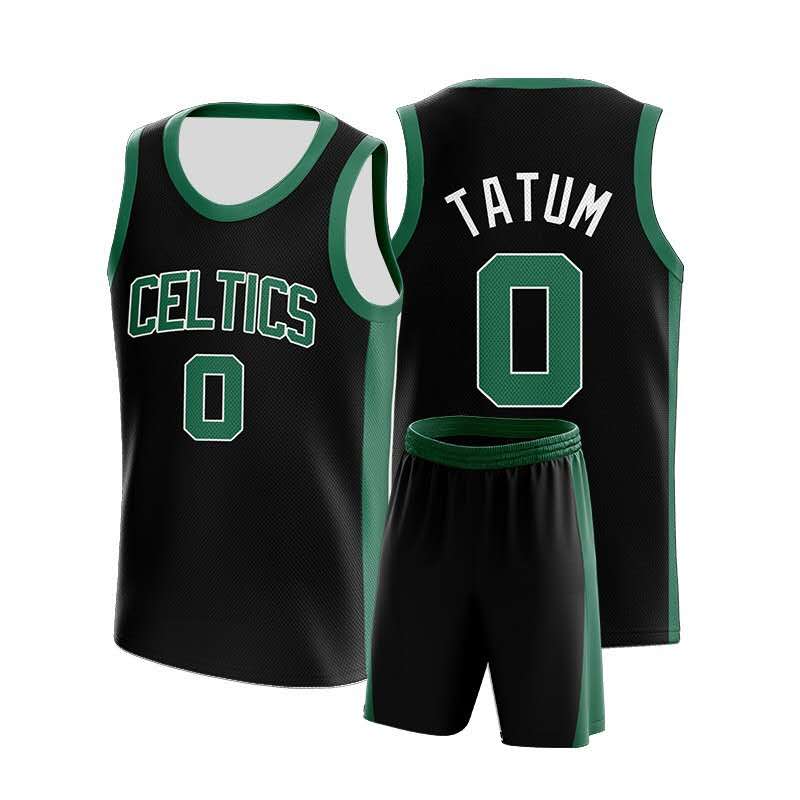
Adding Special Features for Performance
Understanding the performance aspect of a jersey is crucial, as it directly impacts the player’s comfort and ability to move freely on the field. Here are some special features that can enhance a jersey’s performance:
The Importance of BreathabilityA well-designed jersey must allow for ample airflow to prevent overheating. Materials like moisture-wicking polyester or bamboo blend offer excellent breathability, ensuring that sweat evaporates quickly, keeping the player cool and dry.
Seamless Construction for Freedom of MovementTraditional stitching can restrict movement, but modern jerseys often feature seamless construction. This means that instead of multiple seams, the jersey is made from a single piece of fabric, which reduces chafing and allows for a full range of motion.
Strategic Pockets for ConvenienceWhile not a performance feature in the traditional sense, strategically placed pockets can greatly enhance a player’s efficiency. For instance, a small pocket on the side of a jersey can hold a small water bottle, or a zippered compartment can secure a small piece of equipment or identification.
Reflective Elements for SafetySafety should never be compromised, especially during nighttime games or training sessions. Reflective strips or logos can be added to the jersey to increase visibility, making players more noticeable to referees, opponents, and spectators alike.
Thermal Regulation with Moisture ManagementJerseys designed with thermal regulation in mind can keep players comfortable in varying weather conditions. This is achieved through layered materials or insulation that helps maintain a stable body temperature, regardless of the external climate.
UV Protection for Outdoor PlayFor outdoor games, especially in sunny climates, incorporating UV protection into the jersey fabric is essential. Specialized materials can block a significant portion of the sun’s harmful rays, protecting the player’s skin from damage.
Compression Features for Enhanced PerformanceCompression jerseys are becoming increasingly popular, as they offer support to muscles, reducing the risk of injury. These garments are designed to compress key areas of the body, improving blood flow and reducing fatigue.
Ventilation Zones for CoolingSome jerseys have strategically placed ventilation zones, often around the armpits or sides, to promote air circulation. This helps to dissipate heat and reduce perspiration, which can lead to better endurance and performance.
Durable and Long-Lasting MaterialsA performance jersey must be made from high-quality, durable materials that can withstand the rigors of play. This includes resistance to wear and tear, as well as the ability to maintain its shape and color over time.
Adjustable Cuffs and HemsTo accommodate different body types and preferences, jerseys with adjustable cuffs and hems can be a game-changer. This feature allows players to customize the fit of the jersey, ensuring it stays in place during intense activities without causing discomfort.
Anti-Bacterial and Odor-Resistant PropertiesThe accumulation of sweat and bacteria can lead to unpleasant odors and skin irritations. Jerseys with anti-bacterial properties help to keep the garment fresher for longer, as they inhibit the growth of odor-causing microorganisms.
Tailored Fit for Optimal ComfortThe cut of the jersey is equally important as the materials and features. A tailored fit ensures that the jersey is not too tight, which can restrict movement, nor too loose, which can lead to bunching and discomfort.
Reflective Stripes for VisibilityIn addition to logos, reflective stripes can be incorporated into the design of the jersey to enhance visibility during low-light conditions. These stripes are typically made of a high-visibility material that can be seen from great distances.
Adjustable Straps for Protective GearFor sports like soccer or American football, where protective gear is worn, adjustable straps on the jersey can be a lifesaver. These straps allow players to secure their helmets or shoulder pads without the jersey getting in the way.
In conclusion, adding special features to a jersey can significantly enhance a player’s performance, comfort, and safety. From breathable materials to strategic pockets, each element plays a role in creating a garment that is as functional as it is stylish.
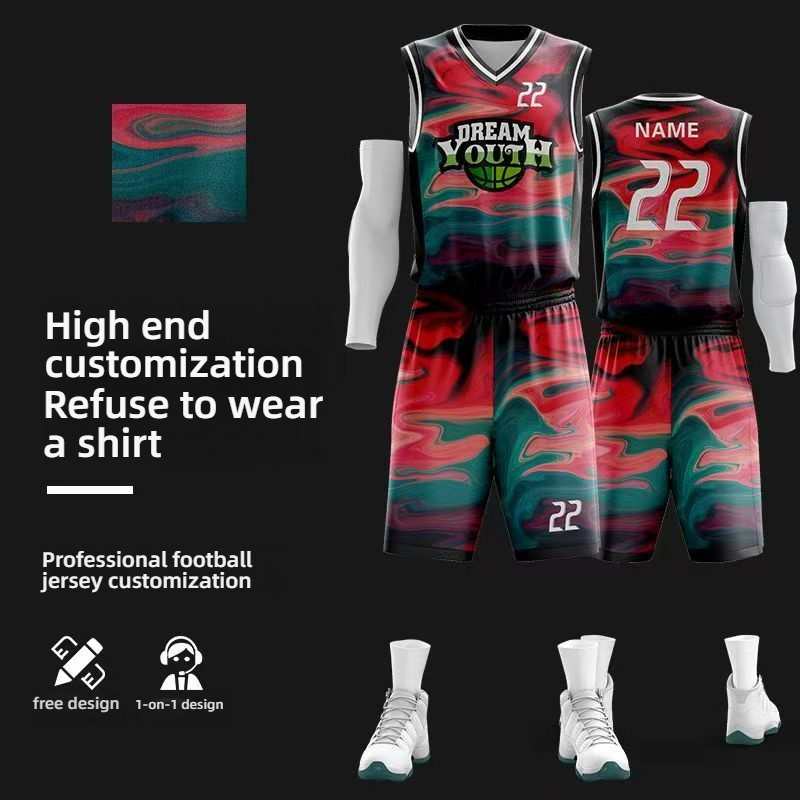
Personalizing Your Design
Designing a custom jersey is a chance to make a statement, and personalizing your design goes beyond just picking your favorite colors. It’s about infusing your unique style and personality into every aspect of the garment. Here’s how you can make your jersey truly one of a kind:
Reflect on Your Style: Think about what you love in terms of fashion and aesthetics. Do you prefer a sleek, minimalist look, or are you drawn to bold, vibrant patterns? This reflection will help guide you in choosing elements that resonate with your personal style.
Customize Your Colors: While you might want to stay within the team’s color palette, you can always add a personal touch by selecting the exact shades that you prefer. Whether it’s a subtle gradient or a mix of complementary colors, the choice of hues can elevate your jersey from standard to statement piece.
Embrace Patterns and Graphics: Consider incorporating patterns or graphics that reflect your interests, hobbies, or experiences. From geometric designs to floral motifs, or even abstract art inspired by your travels, these details can add a layer of personal significance to your jersey.
Incorporate Personal Mottoes or Quotes: If there’s a phrase or motto that holds particular meaning to you, why not have it emblazoned on your jersey? It could be a reminder of your goals, a tribute to someone who’s inspired you, or a mantra that drives you forward.
Choose Unique Fonts: The font you select for names, numbers, or any text on the jersey can greatly impact the overall look. Whether you go for a classic, serif font or something more modern and stylized, the choice of typeface can reflect your taste and make your jersey stand out.
Add Custom Embroidery: Embroidery can take personalization to the next level. You can have intricate designs or even your initials embroidered onto the jersey. This not only adds a luxurious touch but also ensures that no one else has a jersey exactly like yours.
Personalize the Sleeves: Some custom jerseys allow for creative freedom with the sleeves. You could choose a solid color for a sleek look or opt for a pattern that complements the rest of the jersey. For a unique twist, consider a gradient sleeve that transitions from the team color to your favorite hue.
Incorporate Special Accents: Look for ways to add special accents that might not be available in standard designs. This could include reflective strips for safety, glow-in-the-dark details for nighttime visibility, or even a hidden pocket for personal items.
Collaborate with Designers: If you’re struggling to come up with ideas, consider working with a professional designer. They can help you translate your vision into a reality, ensuring that every element of your jersey is perfect.
Remember Your Audience: While personalizing your jersey is about making it your own, it’s also important to consider who will be wearing it. If it’s for a team, you’ll want to ensure that the design is cohesive with the team’s image and not too distracting.
Be Mindful of Comfort: Personalization doesn’t mean compromising on comfort. Ensure that any additional elements you add to the jersey are not only stylish but also functional and comfortable to wear.
Showcase Your Achievements: If you have any significant achievements or milestones, you might want to highlight them on your jersey. This could be in the form of a badge, a patch, or a unique design element that represents your success.
Create a Legacy: Finally, think about how your custom jersey will be remembered. Whether it’s a keepsake for personal use or a symbol of pride for a team, the personalization should make the jersey a cherished item in your collection.
By focusing on these aspects, you can create a custom jersey that not only fits well but also reflects who you are, making it a truly personalized piece of wearable art.
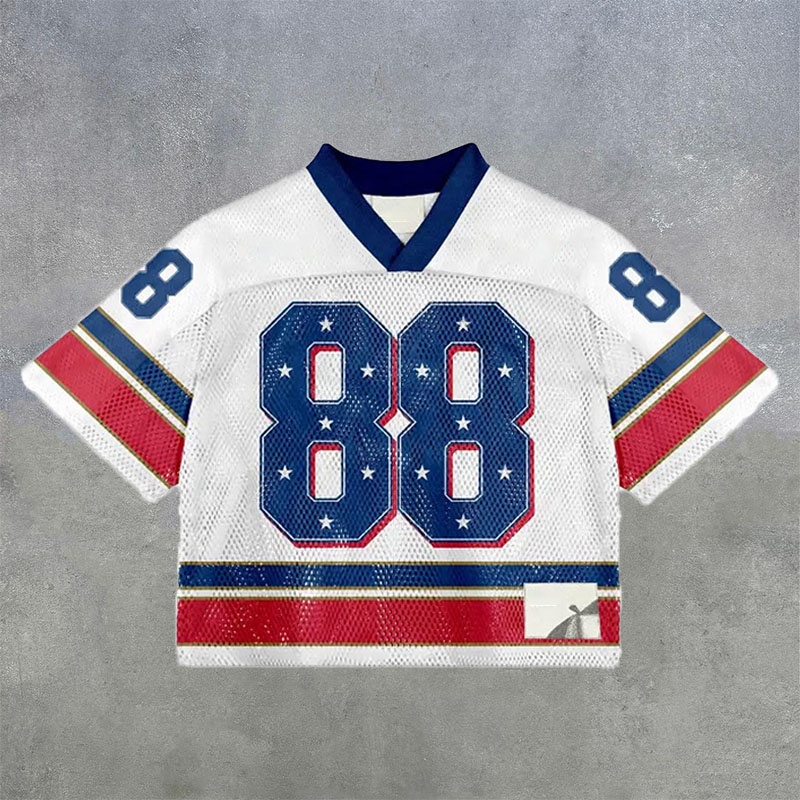
Testing and Getting Feedback
Understanding the fit of a jersey is crucial for both comfort and performance. It’s not just about how it looks; it’s about how it feels and functions during a game. Let’s delve into the factors that influence the cut and fit of a custom jersey.
The material of the jersey plays a significant role in determining its cut and fit. Different fabrics have varying stretch, weight, and breathability, which all contribute to how the jersey conforms to the body. For instance, a jersey made from a lightweight, breathable fabric like mesh may have a looser fit to allow for better air circulation, while a thicker, more durable material might be cut to be more form-fitting for support.
Body type is a key consideration when choosing the cut and fit of a jersey. Athletes come in all shapes and sizes, and what works for one may not work for another. A jersey that’s too tight can restrict movement and cause discomfort, whereas one that’s too loose can flap in the wind and affect performance. Tailoring the fit to your body type ensures that the jersey moves with you, not against you.
The purpose of the jersey also dictates its cut. For instance, a basketball jersey designed for high-intensity play might be cut with a tighter fit to reduce excess fabric that could hinder agility. Conversely, a soccer jersey worn during a casual match might be looser to provide more comfort and allow for easier breathing.
The arm and sleeve length are important details to consider. Sleeves that are too short can expose the skin to the elements, while sleeves that are too long can bunch up and cause discomfort. The width of the sleeves should also be taken into account, as overly wide sleeves can restrict arm movement.
Collar design is another factor that affects the overall fit of a jersey. A crew neck offers a classic, versatile look and is comfortable for most activities. However, a V-neck or a stand-up collar might be preferred for certain sports, as they can provide additional support or a more aerodynamic profile.
The waistband is often overlooked but is crucial for a jersey’s fit. For sports like cycling or running, a high waistband can help keep the jersey in place and prevent it from riding up. In contrast, a lower waistband might be more suitable for activities where a looser fit is desired.
The overall silhouette of the jersey should also be considered. A more streamlined cut can reduce wind resistance and improve aerodynamics, which is beneficial for sports like cycling or swimming. However, for sports where the jersey is primarily worn for warmth or protection, a bulkier cut might be more appropriate.
When it comes to customizing a jersey, it’s important to consider how the design elements will affect the fit. Logos, numbers, and sponsor patches can add bulk, so it’s essential to ensure that these additions won’t compromise the jersey’s comfort or performance.
Lastly, it’s worth noting that the age and skill level of the wearer can also influence the desired fit. Younger athletes or beginners might prefer a looser fit for ease of movement, while experienced athletes might opt for a tighter fit for better control and reduced drag.
In conclusion, the cut and fit of a custom jersey are deeply personal choices that should be based on the individual’s body type, the sport they play, and their personal preferences. By carefully considering these factors, you can ensure that your custom jersey not only looks great but also performs at its best.
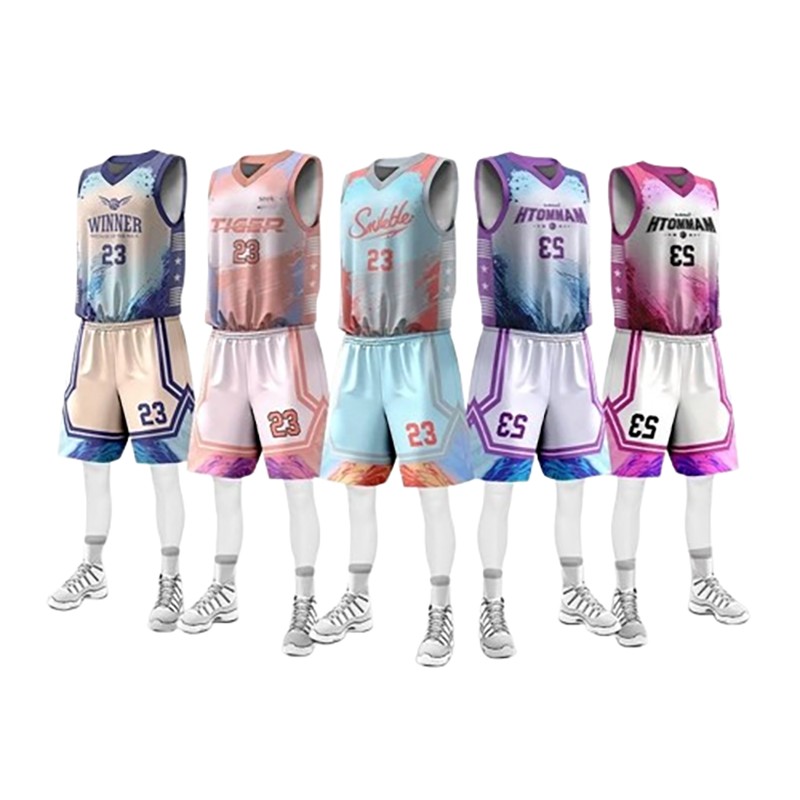
Finalizing the Design and Production
Choosing the right fabric for a custom jersey is a crucial step that can significantly impact both the look and the feel of the garment. The fabric not only determines how the jersey fits and moves but also how it withstands wear and tear over time. Here are some key factors to consider when selecting the perfect fabric for your custom jersey:
Fabric Weight and ThicknessThe weight and thickness of the fabric are important for ensuring the jersey is comfortable and durable. Lightweight fabrics are ideal for warm weather, allowing for breathability and flexibility. They’re perfect for summer sports and activities. On the other hand, thicker, heavier fabrics are better suited for colder climates, providing warmth and a sturdier feel. Consider the season and the intended use of the jersey when deciding on the weight and thickness.
Material CompositionThe material composition can greatly influence the jersey’s performance. Common materials include cotton, polyester, spandex, and blends of these. Cotton is natural and breathable but may not offer the same level of stretch or durability as synthetic materials. Polyester is durable, moisture-wicking, and resistant to wrinkles, making it a popular choice for performance jerseys. Spandex adds stretch, enhancing the jersey’s fit and comfort. Blends of these materials can offer the best of both worlds, combining the natural feel of cotton with the performance benefits of synthetics.
Wicking PropertiesFor jerseys intended for athletic wear, wicking properties are essential. Wicking fabrics pull moisture away from the skin, keeping the wearer dry and comfortable. Look for fabrics that are specifically designed for moisture management, such as those with a Dri-FIT or CoolMax label. These materials are engineered to move sweat away from the body, which is crucial for maintaining optimal performance and comfort during physical activity.
Stretch and ElasticityThe stretch and elasticity of the fabric are important for a good fit. A jersey that doesn’t stretch can feel restrictive and uncomfortable, while one that’s too stretchy might not provide the necessary support. The amount of stretch you need depends on the type of activity the jersey is for. For high-impact sports, a jersey with a higher percentage of spandex can offer the necessary flexibility without compromising support.
Durability and LongevityConsider how often the jersey will be worn and how it will be cared for. Some fabrics are more durable than others, withstanding frequent washing and wear better. Fabrics like polyester are known for their longevity, while cotton might require more care to maintain its shape and color over time. Choose a fabric that aligns with the expected lifespan of the jersey and the care it will receive.
Colorfastness and Fade ResistanceIf the jersey is intended for a team or an event with branding, colorfastness is crucial. You want the logos and colors to remain vibrant after numerous washes. Fabrics that are treated with colorfast dyes or have been pre-shrunk can help maintain their original look. Check the fabric’s colorfastness rating to ensure it meets your standards.
Touch and ComfortFinally, the touch of the fabric is something you should experience firsthand. A jersey that feels rough or itchy can be uncomfortable to wear, even if it has all the right performance qualities. Test the fabric by touching it and, if possible, wearing a sample. A soft, smooth texture can make a significant difference in the overall comfort of the jersey.
Remember, the fabric choice for your custom jersey is a balance between performance, comfort, and aesthetics. Take the time to research and select a fabric that not only meets the functional needs of the wearer but also reflects the style and brand identity of the team or individual.
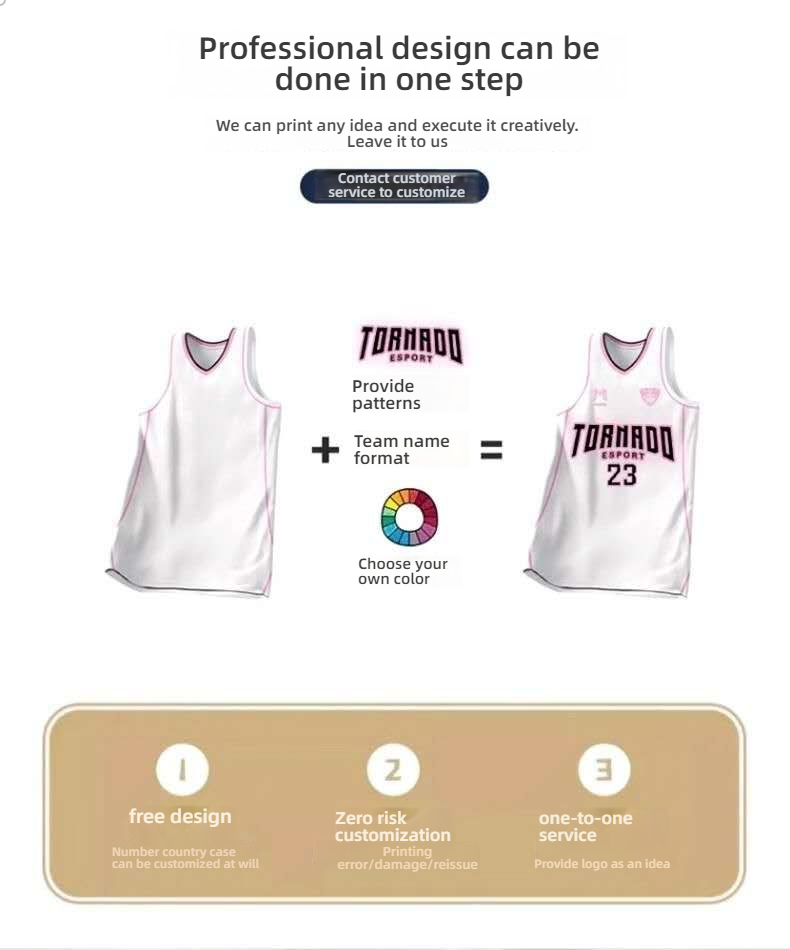
Maintaining Your Custom Jersey
Choosing the right fabric for your custom jersey is a crucial step that can greatly impact both the performance and the look of the garment. The fabric not only needs to be comfortable to wear but also durable enough to withstand the rigors of sports. Here are some key factors to consider when selecting the perfect fabric for your custom jersey:
-
Material Type: The choice of material is fundamental. Common options include cotton, polyester, nylon, and blends like spandex-polyester. Cotton is breathable and comfortable but less durable, while polyester is more resistant to wear and tear. Spandex adds elasticity, providing a better fit and range of motion.
-
Breathability: If you’re designing a jersey for a sport that involves intense physical activity, breathability is a must. Materials like moisture-wicking polyester can pull sweat away from the skin, keeping you cooler and drier. Consider the climate and the nature of the sport when evaluating breathability.
-
Elasticity: For sports that require a lot of movement, elasticity is key. A jersey that stretches and conforms to your body allows for greater flexibility and reduces the risk of chafing. Look for fabrics that include elastane or spandex, which offer excellent stretch and recovery.
-
Moisture Management: Fabrics with moisture management properties are ideal for sports jerseys. They help to keep sweat from pooling on the surface, which can lead to discomfort and chills. Fabrics like Dri-FIT or CoolMax are designed to wick moisture away from the skin.
-
Durability: If your jersey will be worn often or in harsh conditions, durability is important. Some fabrics, like nylon, are more resistant to abrasion and can withstand the wear and tear of active use. Consider the lifespan of the jersey and how often it will be worn.
-
Comfort: The jersey should feel comfortable against your skin, especially if it’s intended for extended periods of wear. The fabric should be soft and not irritating. Some jerseys are treated with softening agents to enhance comfort.
-
UV Protection: For jerseys that will be worn outdoors, UV protection is a valuable feature. Some synthetic fabrics are treated with UV-blocking agents to shield the skin from harmful rays.
-
Cost: The cost of the fabric can vary widely, and it’s important to consider your budget. High-quality, performance fabrics may be more expensive, but they can offer better long-term value due to their durability and performance benefits.
-
Sustainability: More and more athletes and consumers are looking for sustainable options. Fabrics made from recycled materials or those that are biodegradable can be a more eco-friendly choice.
-
Customization: Finally, consider how the fabric will look when it’s customized with logos, numbers, and designs. Some fabrics may show colors or prints better than others, so choose one that complements your design vision.
Remember, the right fabric can make a significant difference in the overall quality and performance of your custom jersey. Take the time to research and test different fabrics to find the perfect match for your needs.

